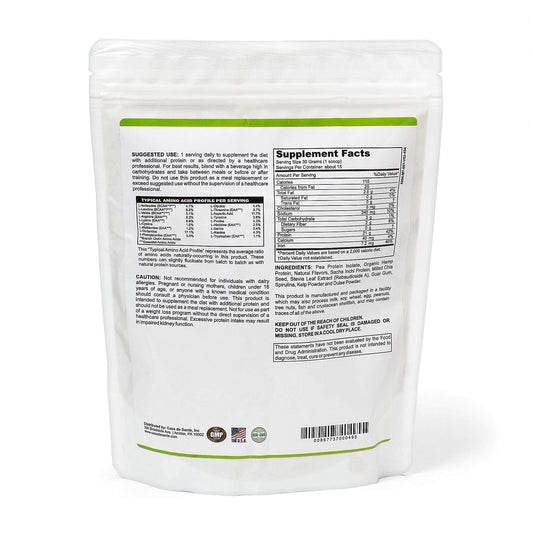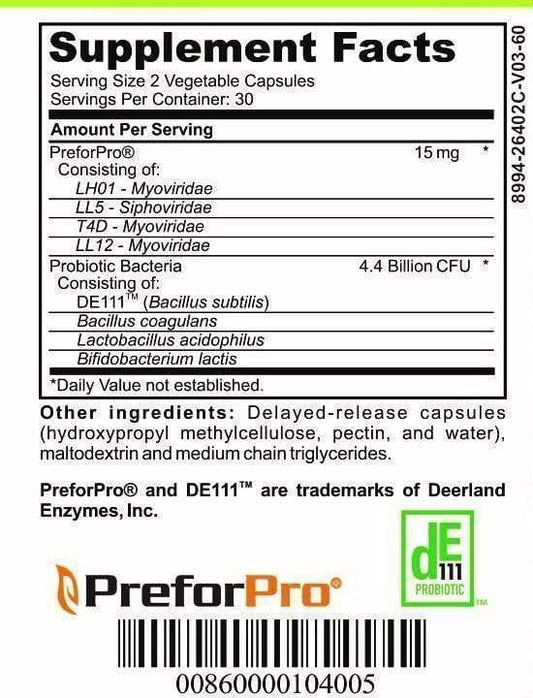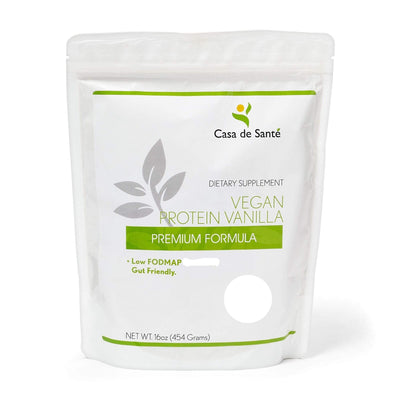LRA Comprehensive 317 Panel by ELISA / ACT Biotechnologies Vs ELISA Test
LRA Comprehensive 317 Panel by ELISA / ACT Biotechnologies Vs ELISA Test
In the field of medical diagnostics, there are several tests available to healthcare professionals to determine the presence or absence of certain diseases or conditions. Two such tests that are commonly used are the LRA Comprehensive 317 Panel by ELISA / ACT Biotechnologies and the ELISA Test. In this article, we will delve into the details of these tests, understand their differences and similarities, and explore the case studies and research findings associated with them.
Understanding the Basics of ELISA Test
Before we dive into comparing the two tests, let's take a closer look at the ELISA Test itself. ELISA stands for "enzyme-linked immunosorbent assay" and is a widely used laboratory technique to detect and measure the presence of proteins, hormones, antibodies, and other substances in a sample.
The ELISA Test is a powerful tool in the field of medical diagnostics and research. It provides valuable information about the presence and quantity of specific substances in a sample, allowing healthcare professionals and scientists to make informed decisions and conduct further investigations.
What is an ELISA Test?
An ELISA Test is a type of immunoassay that utilizes specific antibodies and enzymes to detect and quantify substances of interest. It is based on the principle of antigen-antibody binding, where the target substance (antigen) binds to specific antibodies present in the test sample.
This binding interaction is the key to the ELISA Test's ability to detect and measure substances. The antibodies used in the test are carefully selected to specifically recognize and bind to the target substance. Once the antigen-antibody binding occurs, the presence of the bound complex can be detected and quantified.
How Does an ELISA Test Work?
The ELISA Test typically involves several steps, each playing a crucial role in the overall process. First, the sample is prepared to ensure that it is in a suitable form for testing. This may involve dilution, filtration, or other techniques depending on the nature of the sample.
Next, the test plate is coated with specific antibodies that are capable of binding to the target substance. This step is important as it ensures that only the desired substance will be detected and measured. The antibodies are carefully chosen based on their specificity and affinity for the target substance.
Once the test plate is coated, the sample is added and incubated. During this incubation period, the target substance in the sample binds to the specific antibodies on the test plate. This binding step is crucial for the success of the ELISA Test, as it allows for the detection and quantification of the target substance.
After the incubation, the test plate is washed to remove any unbound substances. This step is important to ensure that only the bound complexes remain on the plate, as it is these complexes that will be detected and measured.
Finally, the detection and quantification of the target substance are achieved through enzyme-substrate reactions. Enzymes are conjugated to the antibodies, and when a substrate is added, the enzyme catalyzes a reaction that produces a detectable signal, such as a color change. The intensity of the signal is directly proportional to the concentration of the target substance in the sample.
Common Uses of ELISA Test
The ELISA Test has a wide range of applications in various fields, including medical diagnostics, research laboratories, and biotechnology industries.
In medical diagnostics, the ELISA Test plays a crucial role in diagnosing infectious diseases. By detecting the presence of specific antibodies or antigens associated with the disease, healthcare professionals can accurately identify and treat patients.
ELISA Test is also commonly used in screening for allergies. By measuring the levels of specific allergens or antibodies in a patient's blood, healthcare professionals can determine the presence and severity of allergies, enabling them to develop appropriate treatment plans.
In addition to diagnosing diseases and screening for allergies, the ELISA Test is used in detecting the presence of drugs. By measuring the levels of drugs or drug metabolites in a patient's urine or blood, healthcare professionals can monitor drug use and ensure appropriate medication management.
Furthermore, the ELISA Test is widely used in monitoring hormone levels. By measuring the concentration of hormones in a patient's blood, healthcare professionals can assess hormonal imbalances and make informed decisions regarding treatment options.
Lastly, the ELISA Test is instrumental in studying various biomarkers associated with autoimmune disorders, cancer, and other health conditions. By detecting and quantifying specific biomarkers in a patient's blood or tissue samples, researchers can gain valuable insights into the underlying mechanisms of these conditions and develop targeted therapies.
Introduction to LRA Comprehensive 317 Panel by ELISA / ACT Biotechnologies
Now let's turn our attention to the LRA Comprehensive 317 Panel by ELISA / ACT Biotechnologies. The LRA Comprehensive 317 Panel is a comprehensive blood testing panel that aims to identify delayed hypersensitivity reactions caused by exposure to certain substances.
What is LRA Comprehensive 317 Panel?
The LRA Comprehensive 317 Panel is an advanced diagnostic tool that analyzes immune responses to a wide range of foods, chemicals, and environmental triggers. It consists of a comprehensive panel of 317 substances, covering a vast array of potential triggers that may cause immune system dysregulation and subsequent symptoms.
When a person is exposed to a substance they are sensitive to, their immune system can react in a delayed manner, leading to a range of symptoms that can be difficult to pinpoint and diagnose. The LRA Comprehensive 317 Panel aims to identify these delayed hypersensitivity reactions by analyzing the patient's blood for specific immune markers.
By testing for a comprehensive panel of 317 substances, the LRA Comprehensive 317 Panel provides a more thorough and accurate assessment of a patient's immune responses. This enables healthcare providers to gain a deeper understanding of the potential triggers behind a patient's symptoms, leading to more targeted and effective treatment strategies.
The Role of ACT Biotechnologies in LRA Comprehensive 317 Panel
ACT Biotechnologies, the company behind the LRA Comprehensive 317 Panel, is a leading biotechnology company specializing in immune cell function testing. With years of expertise and research in the field of immune system assessment, ACT Biotechnologies has developed innovative technologies and methodologies that have revolutionized the way immune responses are analyzed.
Through their cutting-edge research and development efforts, ACT Biotechnologies has paved the way for more accurate and comprehensive immune system testing. The LRA Comprehensive 317 Panel is a testament to their commitment to advancing the field of immune cell function testing and providing healthcare providers with valuable insights into their patients' immune responses.
ACT Biotechnologies' dedication to scientific excellence and innovation has earned them a reputation as a trusted partner in the healthcare industry. Their collaboration with ELISA in the development of the LRA Comprehensive 317 Panel showcases their commitment to delivering high-quality diagnostic tools that can significantly improve patient outcomes.
Benefits of Using LRA Comprehensive 317 Panel
One of the key benefits of the LRA Comprehensive 317 Panel is its ability to detect delayed hypersensitivity reactions, which may manifest days or even weeks after exposure to a triggering substance. This makes it particularly useful in identifying hidden triggers of chronic health conditions such as migraines, irritable bowel syndrome, and fatigue.
Traditional allergy tests often focus on immediate hypersensitivity reactions, which occur within minutes or hours of exposure to an allergen. However, many individuals experience delayed reactions that can be just as debilitating, if not more so. The LRA Comprehensive 317 Panel fills this diagnostic gap by specifically targeting delayed hypersensitivity reactions, providing a more comprehensive assessment of a patient's immune system function.
Furthermore, the comprehensive nature of the panel ensures that a wide range of potential triggers can be investigated, providing a more comprehensive understanding of a patient's immune responses and potential triggers of their symptoms. This allows healthcare providers to develop personalized treatment plans that address the root causes of a patient's symptoms, leading to more effective and targeted interventions.
By utilizing the LRA Comprehensive 317 Panel, healthcare providers can gain valuable insights into their patients' immune responses and identify hidden triggers that may be contributing to chronic health conditions. This empowers both patients and healthcare providers to work together towards achieving optimal health and well-being.
Comparing LRA Comprehensive 317 Panel and ELISA Test
While both the LRA Comprehensive 317 Panel and the ELISA Test are valuable diagnostic tools, they have notable differences in terms of their focus and methodology.
Similarities Between LRA Comprehensive 317 Panel and ELISA Test
Both the LRA Comprehensive 317 Panel and the ELISA Test are laboratory-based diagnostic tests that utilize immune system responses for identifying specific substances. They both play a significant role in medical diagnostics and research and provide valuable information about a patient's health status.
Differences Between LRA Comprehensive 317 Panel and ELISA Test
One of the key differences between the two tests is the scope of substances analyzed. While the ELISA Test can be used to detect a wide range of substances, the LRA Comprehensive 317 Panel specifically focuses on identifying delayed hypersensitivity reactions caused by exposure to various foods, chemicals, and environmental triggers.
Another difference lies in the methodology employed. The ELISA Test uses enzyme-linked immunosorbent assays, as mentioned earlier, whereas the LRA Comprehensive 317 Panel utilizes a combination of lymphocyte response assays (LRA) and ELISA to assess immune cell responses.
Case Studies and Research Findings
Let's explore the case studies and research findings associated with the LRA Comprehensive 317 Panel and the ELISA Test to gain further insights into their effectiveness and efficiency.
Case Study 1: Effectiveness of LRA Comprehensive 317 Panel
A case study conducted on patients experiencing chronic migraines found that the LRA Comprehensive 317 Panel helped identify specific food triggers that were contributing to the frequency and severity of migraines. By eliminating these triggers from their diets, patients reported a significant reduction in migraine episodes and an overall improvement in their quality of life.
Case Study 2: Efficiency of ELISA Test
In a study comparing the ELISA Test with other diagnostic techniques, researchers found that the ELISA Test had a high sensitivity and specificity in detecting the presence of specific viral antigens in patient samples. Its efficiency in diagnosing viral infections made it a valuable tool for accurate and timely medical intervention.
Recent Research Findings
Recent research in the field of immunology has emphasized the importance of understanding individual immune responses and identifying personalized triggers for immune system dysregulation. Both the LRA Comprehensive 317 Panel and the ELISA Test have contributed to this growing body of knowledge, enabling healthcare professionals to provide targeted interventions and improve patient outcomes.
In conclusion, the LRA Comprehensive 317 Panel by ELISA / ACT Biotechnologies and the ELISA Test are two distinct yet valuable diagnostic tools in the field of medical diagnostics. While the ELISA Test is a versatile method used to detect a range of substances, the LRA Comprehensive 317 Panel specifically focuses on identifying delayed hypersensitivity reactions caused by exposure to certain triggers. Both tests have their own unique benefits and applications, and their effectiveness and efficiency have been demonstrated through case studies and research findings. Ultimately, the choice between the two tests depends on the specific diagnostic needs and goals of healthcare professionals and their patients.+




























